Related Research Articles
Infrared astronomy is a sub-discipline of astronomy which specializes in the observation and analysis of astronomical objects using infrared (IR) radiation. The wavelength of infrared light ranges from 0.75 to 300 micrometers, and falls in between visible radiation, which ranges from 380 to 750 nanometers, and submillimeter waves.
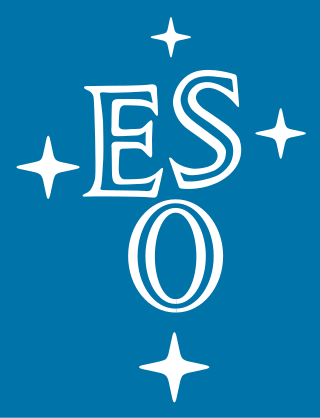
The European Organisation for Astronomical Research in the Southern Hemisphere, commonly referred to as the European Southern Observatory (ESO), is an intergovernmental research organisation made up of 16 member states for ground-based astronomy. Created in 1962, ESO has provided astronomers with state-of-the-art research facilities and access to the southern sky. The organisation employs over 750 staff members and receives annual member state contributions of approximately €162 million. Its observatories are located in northern Chile.
Marc Aaronson was an American astronomer.

Jan Hendrik Oort was a Dutch astronomer who made significant contributions to the understanding of the Milky Way and who was a pioneer in the field of radio astronomy. The New York Times called him "one of the century's foremost explorers of the universe"; the European Space Agency website describes him as "one of the greatest astronomers of the 20th century" and states that he "revolutionised astronomy through his ground-breaking discoveries." In 1955, Oort's name appeared in Life magazine's list of the 100 most famous living people. He has been described as "putting the Netherlands in the forefront of postwar astronomy."

Onsala Space Observatory (OSO), the Swedish National Facility for Radio Astronomy, provides scientists with equipment to study the Earth and the rest of the Universe. The observatory operates two radio telescopes in Onsala, 45 km south of Gothenburg, and takes part in several international projects. Examples of activities:

The Low-Frequency Array, or LOFAR, is a large radio telescope, with an antenna network located mainly in the Netherlands, and spreading across 7 other European countries as of 2019. Originally designed and built by ASTRON, the Netherlands Institute for Radio Astronomy, it was first opened by Queen Beatrix of The Netherlands in 2010, and has since been operated on behalf of the International LOFAR Telescope (ILT) partnership by ASTRON.

ASTRON is the Netherlands Institute for Radio Astronomy. Its main office is in Dwingeloo in the Dwingelderveld National Park in the province of Drenthe. ASTRON is part of the institutes organization of the Dutch Research Council (NWO).
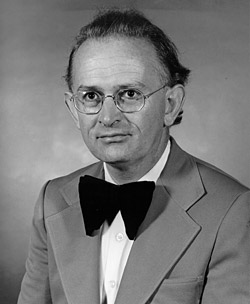
Gart Westerhout was a Dutch-American astronomer. Well before completing his university studies at Leiden, he had already become well-established internationally as a radio astronomer in the Netherlands, specializing in studies of radio sources and the Milky Way Galaxy based on observations of radio continuum emissions and 21-cm spectral line radiation that originates in interstellar hydrogen. He emigrated to the United States, became a naturalized citizen, and held a number of important scientific and management positions in academic and government institutions.
Harvey Raymond Butcher III is an astronomer who has made significant contributions in observational astronomy and instrumentation which have advanced understanding of the formation of stars and of the universe. He received a B.Sc. in Astrophysics from the California Institute of Technology in 1969, where he contributed to the development of advanced infrared spectrometry applied in the first survey of the sky at infrared wavelengths.
Thomas Boles is a Scottish amateur astronomer, discoverer of astronomical objects, author, broadcaster and former communications and computer engineer, who observes from his private "Coddenham Observatory" in Coddenham, Suffolk, United Kingdom. He is known for having discovered a record number of supernovae. The main-belt asteroid 7648 Tomboles is named in his honor.
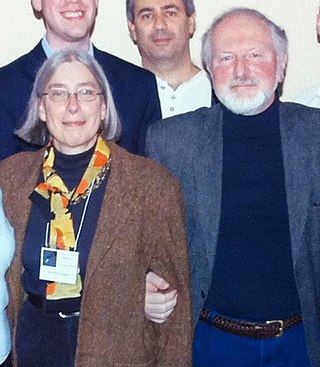
Martha Patricia Haynes is an American astronomer who specializes in radio astronomy and extragalactic astronomy. She is the distinguished professor of arts and sciences in astronomy at Cornell University. She has been on a number of high-level committees within the US and International Astronomical Community, including advisory committee for the Division of Engineering and Physical Sciences of the National Academies (2003–2008) and Astronomy and Astrophysics Decadal Review. She was a vice-president of the executive committee of the International Astronomical Union from 2006–2012, and was on the board of trustees of Associated Universities Inc from 1994 until 2016, serving two terms as board chair and one year as interim president.
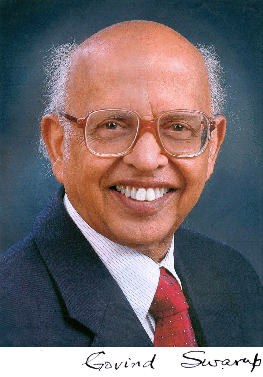
Govind Swarup was a pioneer in radio astronomy. In addition to research contributions in multiple areas of astronomy and astrophysics, he was a driving force behind the building of "ingenious, innovative and powerful observational facilities for front-line research in radio astronomy".
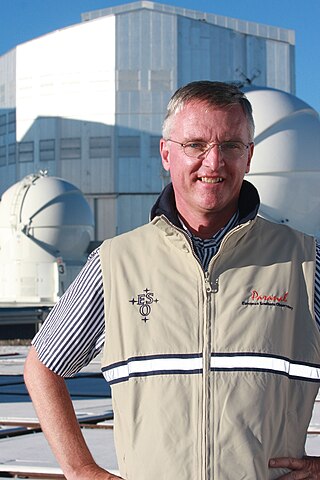
Pieter Timotheus "Tim" de Zeeuw is a Dutch astronomer specializing in the formation, structure and dynamics of galaxies. From 2007 to 2017 he was the director general of European Southern Observatory. He is married to astronomer Ewine van Dishoeck. In May 2022, Leiden University suspended him after an internal review concluded that over several years he repeatedly belittled and insulted women in public and abused his position of power as a professor by threatening to damage their scientific careers; and that in addition to intimidation and inappropriate behavior there was "a component of sexual harassment". The Max Planck Institute for Extraterrestrial Physics announced that they will no longer work with him and the European Southern Observatory banned him from accessing their premises.
Ian Stewart Glass is an infrared astronomer and scientific historian living in Cape Town, South Africa.
Patrick Thaddeus was an American professor and the Robert Wheeler Willson Professor of Applied Astronomy Emeritus at Harvard University. He is best known for mapping carbon monoxide in the Milky Way galaxy and was responsible for the construction of the CfA 1.2 m Millimeter-Wave Telescope.
Christine D. Wilson is a Canadian-American physicist and astronomer, currently a University Distinguished Professor at McMaster University.

Melanie Johnston-Hollitt is an Australian astrophysicist and professor. She has worked on the design, construction, and international governance of several radio telescopes including the Low Frequency Array (LOFAR), the Murchison Widefield Array (MWA) and the upcoming Square Kilometre Array (SKA). She was the director of the Murchison Widefield Array until December 2020 and is a professor at the Curtin Institute of Radio Astronomy at Curtin University and the International Centre for Radio Astronomy Research. Since August 2020, Melanie Johnston-Hollitt is the director of the Curtin Institute for Computation.

Paul Geoffrey Murdin is a British astronomer. He identified the first clear candidate for a black hole, Cygnus X-1, with his colleague Louise Webster.

Norio Kaifu was a Japanese astronomer. He was best known as the president of the International Astronomical Union (IAU) from 2012 to 2015. He directed the Subaru telescope project, which housed the largest monolithic primary mirror in the world from its commission until 2005. Kaifu researched in radio astronomy, extragalactic astronomy, cosmic magnetic fields, non-stable stars, and infrared astronomy. The minor planet 6412 Kaifu is named in his honor.
Peter Thomas Gallagher is an Irish astrophysicist. He specialises in solar physics, notably solar storms and their impact on the Earth. He is Senior Professor, and Head of Astronomy and Astrophysics, at the Dublin Institute for Advanced Studies, director of Dunsink Observatory, and an adjunct professor at Trinity College Dublin. He is also the head of the radio-telescope project I-LOFAR, at Birr Castle. He is widely cited in his field and often quoted in the media.
References
- 1 2 Cluskey, Peter (30 March 2012). "Dutch honour for retired Irish-born astronomer who ran Leiden Observatory". The Irish Times. via HighBeam (subscription required). Archived from the original on 29 June 2014. Retrieved 4 June 2014.
- 1 2 3 4 5 6 7 8 "Page "About George K. Miley" among the web pages for the Symposium "Astronomy, Radio Sources and Society" June 10–13, 2012, Leiden University" . Retrieved 1 February 2016.
- ↑ "Member page for George K. Miley on the IAU website" . Retrieved 1 February 2016.
- ↑ "LOFAR Technical Information on the ASTRON LOFAR pages". Archived from the original on 10 October 2017. Retrieved 1 February 2016.
- ↑ "Background page of the UNAWE website" . Retrieved 1 February 2016.
- ↑ "IAU Strategic Plan 2010 – 2020 "Astronomy for the Developing World – Building from IYA2009" (PDF)" (PDF). 2015.
- ↑ "OAD Report page" . Retrieved 1 February 2016.
- ↑ "Edinburgh Science Festival Press release" . Retrieved 8 February 2016.
- ↑ "Member page for George Miley on the KNAW website" . Retrieved 1 February 2016.
- ↑ "JPL Small-body database entry for (6202) Georgemiley" . Retrieved 1 February 2016.
- ↑ "Symposium homepage at Leiden Observatory" . Retrieved 1 February 2016.
- ↑ "Registrar : Trinity College Dublin, the University of Dublin, Ireland". www.tcd.ie. Retrieved 6 January 2020.